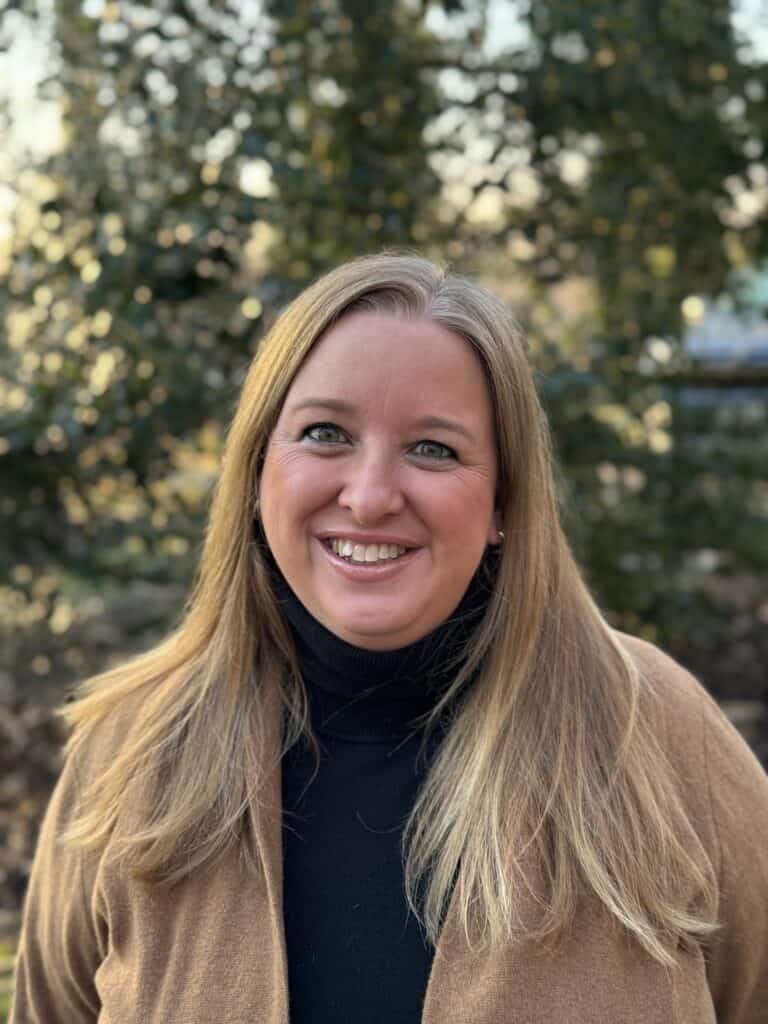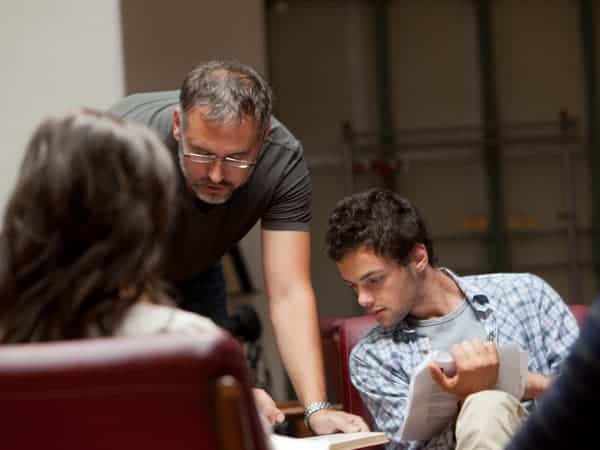Faculty Advisory Board Interview: Shannon Schmidt
Shannon Schmidt
Shannon Schmidt is the Director of the The Amabel Boyce ’70 Center for Learning and Thriving at Garrison Forest School (MD) and a Faculty Advisory Board member at R.E.A.L.® Discussion. We interviewed Shannon about her approach to leadership and how building discussion skills align with the goals of the Boyce Center. What follows is a conversation between Shannon and R.E.A.L.® Partnerships and Program Manager Catherine Dragone. This conversation has been lightly edited for clarity.

Catherine: Shannon, could you tell me your name, position, and your hometown?
Shannon: I’m Shannon Schmidt, the Director of the Boyce Center for Learning and Thriving at Garrison Forest School in Maryland, and I am from Queens, New York.
Catherine: Thinking back, what three words would you use to describe yourself as a student?
Shannon: Enthusiastic, curious, diligent.
Catherine: All words that I would still use to describe you! Did you have a favorite teacher?
Shannon: Yes, my fifth grade teacher Mrs. Renner-Smith. She really saw the strengths in all of her students. She had been a writer before she was a teacher, and I loved writing as a kid, so she was fabulous at giving me a lot of opportunities to write and grow. Her ability to really connect with my personal strengths and interests is something that I try to do as a teacher, and is my goal at the Boyce Center – to see each girl as an individual and have the Center be a place where students can foster their strengths.
Catherine: How would you describe your academic leadership style?
Shannon: Collaborative first and foremost. I’ve always felt that you can have an impact on the students in front of you, but if you can really be collaborative and get a whole team on board, you can have such a greater impact on the whole school. If I had to summarize my approach as a leader it would be: find the strengths in both students and teachers, and get everyone on board rowing in the same direction so that we can make progress and keep students at the center.
Catherine: Tell us about the Boyce Center, and how R.E.A.L. relates to the Boyce Center mission and vision.
Shannon: At the Boyce Center we have three main areas we focus on: academic support, growth and enrichment, and wellness and well being. What is special about R.E.A.L. is that it really does support all three of these, with data that demonstrates how R.E.A.L. is impacting each of these “buckets.”
Catherine: Wow R.E.A.L. really centers a lot of those goals! What do you see as the power of discussion in today’s world for the girls at Garrison Forest?
Shannon: I think discussion, and particularly R.E.A.L., gives the girls the language to voice and own their opinion, and respectfully disagree with people. I think sometimes our girls are afraid to wade into difficult conversations because they don’t want to say the wrong thing, or they don’t want to hurt anybody’s feelings. Most students don’t yet have the language, or sometimes the confidence, to have these conversations. One of the powers of R.E.A.L. is that practice that I was talking about, instead of just talking about what discussion should look like, or telling them it’s okay to disagree – but really having them practice those skills. I really connect with Liza’s metaphor that students don’t need computer labs anymore, they need discussion labs! It’s so powerful to have students reflect on their own growth on these skills too.
I think discussion, and particularly R.E.A.L., gives the girls the language to voice and own their opinion, and respectfully disagree with people.
Shannon Schmidt
Catherine: When it comes to discussion, what are your hopes for students?
Shannon: My hope for the students is that they feel like their voice matters in their classrooms. I want every student to feel like their voice, and all their classmates,’ are a valuable part of the community they are in. With that, I want them to listen to others, not just to respond, but also to understand other perspectives.
My hope for the students is that they feel like their voice matters in their classrooms. I want every student to feel like their voice, and all their classmates,’ are a valuable part of the community they are in. With that, I want them to listen to others, not just to respond, but also to understand other perspectives.
Shannon Schmidt
Catherine: What about your hopes for the Garrison Forest teachers using R.E.A.L. in their classrooms?
Shannon: I hope that R.E.A.L. helps teachers feel empowered and brave enough to have difficult conversations in their classrooms. Our teachers care so much about their students and their students’ learning, and I hope that R.E.A.L. gives them the tools to approach those conversations and feel confident navigating them. I’ve also heard from teachers in the past that they would like tools for how to support quieter or introverted students in discussions, and so my hope for teachers is to really lean on the structures of R.E.A.L. to meet the needs of all our learners.
Catherine: For someone who knows absolutely nothing about R.E.A.L. yet, what would you tell them?
Shannon: R.E.A.L. is a framework for discussion in classrooms, not a curriculum. It can be used in any humanities class to help guide conversation and structure it in a way that is more productive and meaningful for students. I think it’s unique to have a framework that works with lower schoolers all the way up through upper school. So I would also tell people that R.E.A.L. can be a unifying thread throughout campus – and it has been very exciting to have that here at Garrison Forest.
So I would also tell people that R.E.A.L. can be a unifying thread throughout campus – and it has been very exciting to have that here at Garrison Forest.
Shannon Schmidt
Catherine: We are pedagogy nerds here at R.E.A.L.; even beyond discussion…so we have to ask: which education trends or teaching pedagogies do you feel are at the center of your work right now?
Shannon: One thing that I’m doing a lot with right now is looking at how students learn and how to make learning stick for students. We’re really centering that at the Boyce Center. We’ve done a lot of work with retrieval practice, spacing, and interleaving, which leads into my focus of “ how do we get students learning by doing?”
I’m also working with teachers on how to give students feedback in a way that supports their learning and encourages their growth. We’re talking a lot about helping kids develop self-awareness and reflection skills around what it is that they’re learning and what their goals are.
.
Catherine: Thank you so much, Shannon. What a compelling vision for discussion skills leading to learning and thriving at Garrison Forest!






